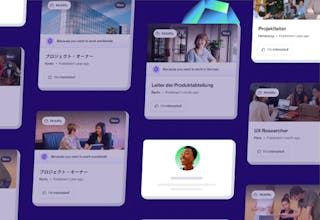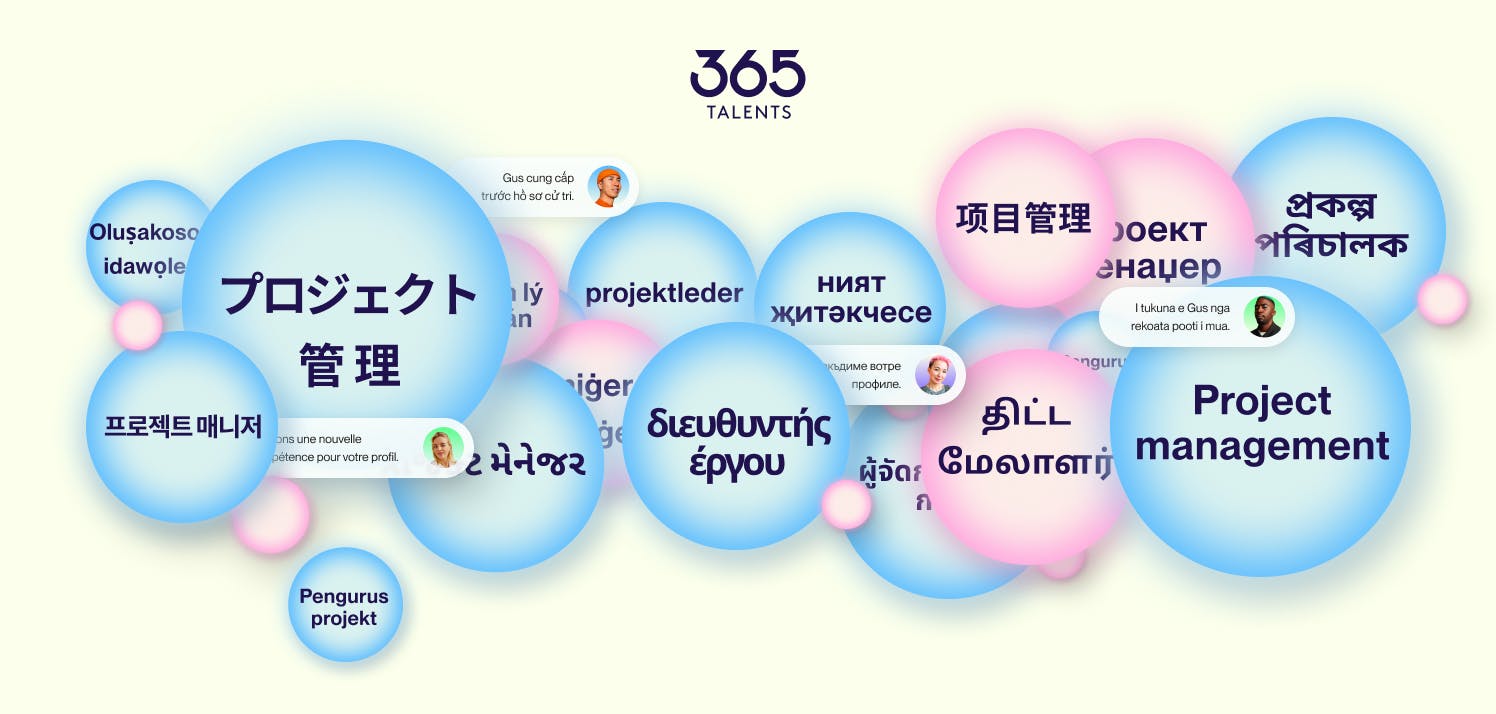How to overcome language barriers in a global workforce

Globalization has long been a critical factor for business leaders, but the role of the global workforce in talent management has only been amplified in recent years by the digital transformation and new workplace policies shepherded in by the rise of remote working.
While business has crossed borders for many years now, what’s new is a rise in valuation and the increasingly-unleashed advantages of having an international workforce. That is: Rather than only having natives of the organization’s home company outposted across the world or working with partners and clients in other countries, enterprises are hiring a truly global workforce made up of talents of myriad of different cultures, nationalities and backgrounds – speaking a myriad of different languages.
It’s worth reiterating: A multilingual, culturally diverse workforce offers many business advantages. Going global allows you to uncover different skills and find talents who are already well-versed in the local intricacies and customs of the markets you are doing business in or looking to expand into. International and global mobility also offers a wider array of opportunities for your people.
Additionally, several studies over the years continue to show that a diversity of perspective and cultural aptitude also leads to higher rates of creativity, innovation and engagement.
However, with a multitude of cultures comes a multitude of languages and unavoidable language barriers, even among the highly-skilled and native speakers.
Language barriers can create challenges for giving direction, explaining expectations and providing performance feedback.
They also contribute to miscommunication, decreased productivity, difficulty collaborating and feelings of disrespect, according to a report published by Forbes Insights and Rosetta Stone Business. The research also found:
- 65% of executives say language barriers exist between managers and other employees
- More than 100 executives at large US businesses with annual revenues of more than $500M report that language barriers have a “significant impact” on business operations
Furthermore, when a company cannot navigate and overcome its language barriers, its opportunity for growth and expansion on a global scale is inherently limited. The importance of an HR department mindful of and equipped with the tools to navigate language barriers is thus of the utmost importance.
Luckily, there are several steps you can take to overcome language barriers and unleash the benefits of having a multilingual, global workforce.
What is a language barrier?
A language barrier, as defined by Nulab, is any “linguistic limitation that creates confusion or prevents comprehension.” There are several types:
- Spoken language and dialects
- Technical languages
- Language disabilities (stutter, dysphonia, hearing loss)
- Written communications (abbreviations, punctuation, phrasing)
- Company-specific language
What are the language barriers and challenges of global workforces at multilingual enterprises?
Beyond the classic forms of language barriers, language barriers in the workplace can affect two particular areas of talent management:
- Agreed-upon language: Multilingual enterprises experience challenges choosing and enforcing an “official” language to be used in the office, especially when the official language is not the local language of the office or even headquarters. Enacting an agreed-upon official language requires change management for both culture and, potentially, significant resources allotted to translation of company documents.
- Performance concerns: Operating in a second language can impact employee performance in unexpected ways. An extrovert and outspoken leader may become more reserved in meetings or their preferred methods of communication may shift. If performance concerns arise in your multilingual workforce, talk to your talents about what is at the root of the concerns and how you can best work with them to perform to the best of their abilities in the language at hand.
At 365Talents, we believe your people reach their full potential and feel most empowered when they are able to self-declare their skills, experiences and ambitions in their own words, on their own terms. How you choose to describe and see yourself is a powerful lever for owning your career path and future, and it all begins with the words you use.
That’s why our solution is designed to take the skills, experiences and ambitions your talents declare and synthesize them into a single source of truth so that you as HR have unparalleled visibility on the bigger picture, while your people can express the nuance of their personal journey.
With its unparalleled multilingual capabilities, 365Talents empowers individuals to express themselves authentically in their preferred language. This fosters an inclusive and personalized talent management experience, tailored to the diverse linguistic needs of global companies. The platform leverages advanced artificial intelligence to efficiently organize translations, providing smart skill suggestions and matching in all those supported languages.
365Talents unique technology offers automatic skills and profile translation, efficient multi-lingual synchronous data management, precise skills detection and matching across over 45 languages. These advanced features empower organizations to overcome language barriers and optimize their talent management processes with exceptional accuracy and effectiveness.








9 ways to overcome language barriers in a multilingual workplace
1. Multilingual HR: Leading by example is an invaluable model for your managers. Whether it means hiring multilingual talents, leveraging multilingual technologies or modeling communication styles, or fostering a respectful environment, embodying the best practices of a global workforce begins with HR.
2. Foster a multilingual, multicultural friendly culture: Not all companies have the luxury or opportunity of encouraging a multilingual workplace (especially when there is an agreed-upon official language) but all companies can create an environment where talents working in a language other than their native language feel comfortable asking questions, learning on the job, admitting misunderstandings and more. You may find it beneficial to create communication guidelines if the shift in languages is new for your company!
3. Adopt barrier-breaking best practices: To minimize language barriers, it is advised to use plain language, avoid expressions and use repetition to make sure your message comes across. That said, be careful to do so respectfully and ask your colleagues what is helpful for their comprehension. Written communication and visual communication are two additional ways you can support a multilingual workforce to ensure comprehension.
4. Enlist professional translators: Not all language barriers can be bridged with culture and many companies may find it beneficial to enlist interpreters and translation services to ensure the most important materials – particularly safety or regulation documents, but HR as well – are properly translated in all of the companies most prevalent languages.
5. Provide language classes: As much as your budget and time allow, providing employees with the resources to improve their language skills can go a long way to minimizing the effects of language barriers. However, try your best not to single out non-native speakers and encourage all employees to improve their language skills to communicate globally.


Talent experience in 45+ languages
With 365Talents, you can empower your employees to express themselves authentically and promote a more inclusive talent experience.
365Talents smart AI seamlessly organizes translations, offers intelligent skill suggestions, and enables seamless matching in 45+ supported languages.
It's your key to seamless global talent engagement, offering:
1. Simplified and unified skills frameworks
2. Empowering global talent discovery & mobility
3. Personalized talent journeys

6. Recruit bilingual or multilingual talents: In tandem with formalized training and L&D opportunities, having a workforce that is comfortably and confidently bilingual or multilingual allows for the fostering of organic peer-learning and a culture that encourages awareness of language and culture barriers.
7. Discuss cultural differences and host sensitivity training: Communications barriers for a global workforce can arise as much from values, customs, or hierarchical codes as from a literal understanding of words, so it is often worth engaging in company-wide discussions (if not formal sensitivity trainings) to improve awareness of cultural differences and communication styles. The Culture Map is also a popular resource for understanding the root of communication issues in a global workforce!
8. Seek out multilingual solutions: Using technology that is already equipped with multilingual capabilities is a great way to remove one point of friction in the multilingual workforce. Across the HR and corporate tech suite exist several solutions that will do the work of translating and unifying language for your employees, including communication (Microsoft Teams, for example, supports 44 languages with live subtitling in English and Skype supports 43 with live subtitling in 11 languages), learning and development (360Learning) and talent marketplaces (365Talents). A multilingual solution that can integrate with other multilingual solutions will only make your single source of truth stronger.
9. Be respectful: Last but not least, it is worth reiterating the importance of being respectful as you engage in all of the above tips. Communication is ultimately a deeply interpersonal act, so as you pursue technical and cultural strategies to overcome language barriers, it’s important to do so with care and respect for all your talents.
To learn more about how a multilingual talent experience platform can help you overcome language barriers in your global workforce, schedule a meeting with our team today.


Ready to chart a new course for your people at work?
Learn about the multilingual tools 365Talents provides for skills management, strategic workforce planning, and more.

Uncover more HR insights









